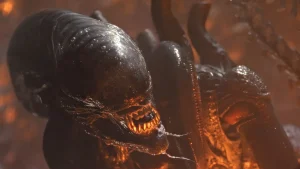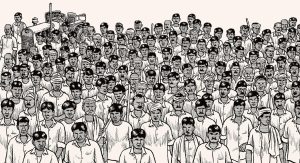Netflix’s horror game has gotten so much bigger lately, especially when you look at its original productions. And it’s fair to say that everything really took off seven years ago, when a show no one expected came along and completely changed the rules of horror on TV. It wasn’t about monsters and creepy creatures, and it definitely wasn’t made just to make people scream. The bold idea was to lean into a kind of fear that settles in more slowly. It wasn’t exactly psychological horror, but it was emotional. The goal was to make you think after the episode ended, which is rare in a genre that is often used to just shock you. And then, when people finally caught on to what it was doing, it became obvious Netflix had something pretty special.
When The Haunting of Hill House came out in October 2018, Mike Flanagan’s show showed up quietly, but it only took a few of the more intriguing episodes for everyone to talk. On paper, the premise is actually very simple: a family haunted by a traumatic past inside a haunted house. But instead of leaning into clichés, the writing feels like group therapy with ghosts in the room. The structure moves between the Crain siblings’ childhood and adulthood, showing exactly how what happened in Hill House continued to control them decades later. In short, it’s less about what lives in the house and more about what lives inside each character.
Today, The Haunting of Hill House isn’t just a win for Netflix, but a landmark in what horror on TV can be. Flanagan’s style became known, but only because this show earned it. The director had a way of treating horror like emotion – rather than chasing constant scares (which, yes, the show has, at the right moments), it focuses on how those scares affect people. The house, for instance, isn’t just a setting; it’s an extension of trauma. Everything in it seems to watch you: the walls, the shadows, especially the silence. Discomfort is there from the start, no gimmicks needed; sometimes it’s just camera work and pacing to build tension. You feel something deeply off, even when nothing’s happening. And when the scare hits, it reminds you that fear here is a consequence, not the cause.
Until today, the show is remembered by horror fans as one of the very best ever made. Its impact came from a place no one expected could move so much. The writing is tightly constructed and precise, but it goes further. Before, horror was seen as a niche product: even though super fans always existed, it was something you’d binge only in October, Halloween season style, and then forget. After The Haunting of Hill House, it became clear that something smarter could be done, with fully dimensional characters and a story that could hook viewers who weren’t even specifically looking to watch the genre. Of course, there’s classic adrenaline, but it also pulls at your heart. That balance is what makes people feel they saw something different, but worth exploring. It’s still horror, but the drama and emotion are enough to make anyone want to watch.
The best example might be the sixth episode, “Two Storms,” shot in long continuous takes, meshing the supernatural with family drama in a perfectly calculated chaos. Every technical choice serves to draw you close to the characters. The terror comes from being stuck with them, not watching from outside. The camera moves through the house like another ghost observing everything, while a storm rages, both in the Crains’ childhood and their adult lives. Resentments surface, the atmosphere turns tragic, and there are almost no breaks or relief. It forces you to be stuck in tension among them. It’s a Flanagan move that intensifies how inseparable past and present are – and that, yes, it scares.
Because of that, the show’s success led to an anthology, and then came The Haunting of Bly Manor. And naturally, Flanagan started branching out in his own style with other series such as The Fall of the House of Usher, which found its select audience, and Midnight Mass, which was widely considered a masterpiece of horror (though often underrated overall). Even though each has a different tone and quality, they all follow the same line: horror with purpose, not just scares. Over time, the director earned visibility for knowing how to reinvent, in a very good way, what many people love watching. Nowadays, you can still find horror just to be entertained, but if you want it to make you think too, there you go.
And with that, it’s incredible how people still compare everything Flanagan does to this show. Yes, his later productions were brilliant, but no doubt none matched the same level of impact. That’s not really a flaw; it’s just what happens when you start with something that becomes an instant benchmark. The first season of The Haunting anthology is the kind of work that defines a career: emotional, scary, visually memorable, and above all, honest in what it means to say. Flanagan doesn’t try to trick you; he invites you to stare fear in the face and understand what it means. It’s almost revolutionary, because nobody had tried this clearly before (especially not in TV horror productions).
That success also left a clear mark on how other shows got made. Suddenly, everyone wanted “emotional horror” – metaphors about trauma and grief. Some attempts worked, like Servant or Lovecraft Country, for example, but others felt like obvious rip-offs. The fact is that The Haunting of Hill House showed the audience is open to something more complex, and that horror can move you and scare you. It’s the kind of show people keep discovering every year, because it’s timeless and it speaks to what’s universal: fear of losing, fear of remembering, and fear of repeating what destroyed us.
The Haunting of Hill House is intense, sometimes uncomfortable, but real in every detail. Seven years in, it still stands as the high-water mark in the Flanagan–Netflix partnership and a fan favorite. Scaring just to scare is fine, but knowing how to scare by hitting what’s really scary for humans – that’s next level. It was the production that started this trend and remains one of the best ever made because it knows better than almost any other what it truly means to terrify deep down.
Are you a fan of the show? Do you think it totally changed the game for horror on TV? Let us know in the comments!
The post 7 Years Ago, Netflix Dropped a Horror TV Masterpiece That Kickstarted an Incredible Trend appeared first on ComicBook.com.




